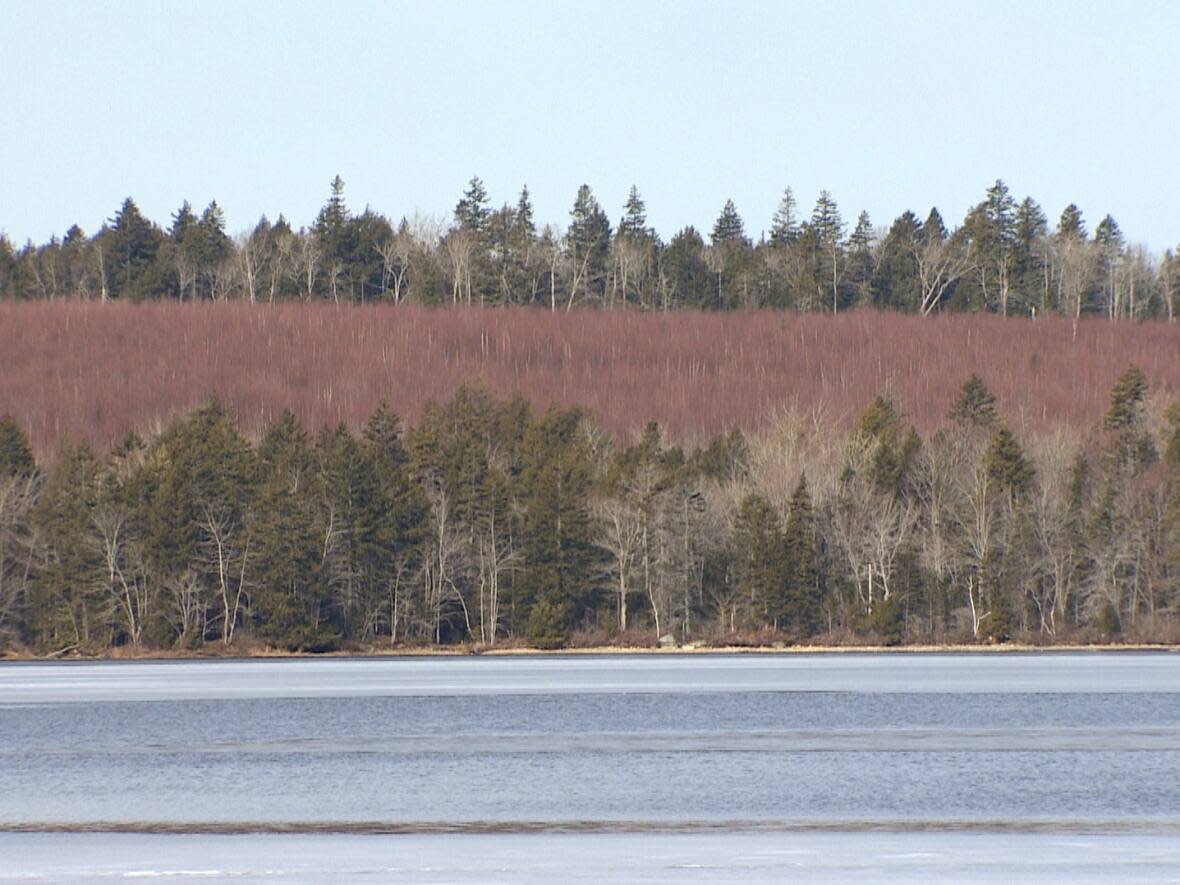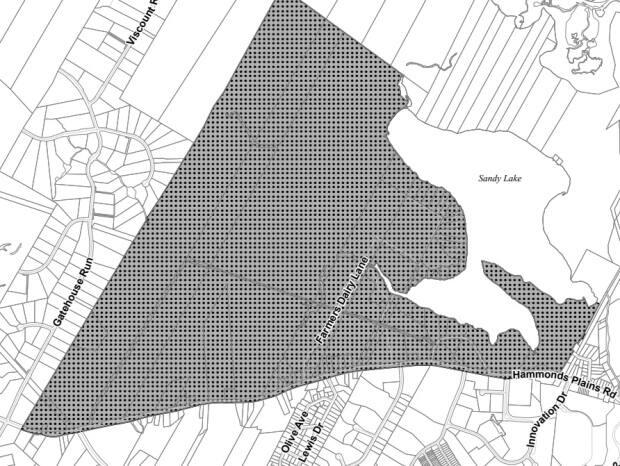Physicians' group joins opposition to Sandy Lake development area

Dozens of medical professionals have joined the call to stop development around a Bedford lake, which they say could hurt the environment and the health of residents.
A group of 70 doctors, nurses, scientists and other health care workers with the Nova Scotia committee of Canadian Physicians for the Environment (CAPE) recently wrote to the province, urging them to take Sandy Lake off the list of special planning areas.
"These are quite literally our city's lungs, and we need to keep them as such if we want clean air," said IWK emergency doctor Chris McCrossin.
A provincial housing task force chose the 10 special planning areas around Halifax Regional Municipality as places to fast-track residential developments, in order to address the city's ongoing housing crisis. But Halifax councillors and Mayor Mike Savage have expressed concerns that there will be less public consultation on the projects.
The Sandy Lake area includes about 400 hectares of land west and south of the lake, which local advocates have long asked to be added into the existing Sandy Lake Park on the eastern side.

McCrossin said access to natural green space has proven medical benefits for mental health, chronic lung conditions, concentration scores in children with ADHD, and inflammation and stress in adults.
He said developments like Sandy Lake often require people to rely on cars and provide inadequate access to jobs, shops, and schools — all of which have negative consequences for physical and mental health.
"Why would you pick specifically ecologically sensitive areas that we know have global benefits to the health of Haligonians?" McCrossin said.
"Why those areas would be fast-tracked for development makes no sense."

Clayton Developments plans to create 6,000 housing units in the area through a mix of residential buildings with new streets and public parks. Various studies, including land suitability and transportation, have to be done before a master plan can be considered.
CBC News has reached out to Clayton Developments about the Sandy Lake concerns but did not receive a response by deadline.

Karen Robinson, co-chair of the Sandy Lake-Sackville River Regional Park Coalition, said any development endangers stands of old-growth Wabanaki-Acadian forests, habitats for 16 species at risk (including snapping turtle, chimney swift and Canada warbler) and the health of the lake where Atlantic salmon have only recently returned.
In 2018, Halifax Regional Municipality's Green Network Plan — a land management and community design strategy — identified three wildlife corridors in the areas surrounding Sandy Lake, meaning the area is important for animal migration and habitat.
"This place is a treasure and it's a gem, and it's a unit of ecological richness that is just beyond compare in Nova Scotia," Robinson said.
Wetlands and freshwater lakes within the special planning area also are important to the Sackville River watershed, and the buffer zones around these features do not leave much room for development, according to a report from July 2022 by consultant McCallum Environmental commissioned by the municipality.

"I do think that report provides an opportunity or justification against development at that site," said Kortney Dunsby, sustainable cities coordinator at the Ecology Action Centre (EAC).
A provincial spokesperson, Krista Higdon, said in an email that Nova Scotia's housing crisis is "particularly challenging" in the Halifax area where there is a current deficit of between 17,000 and 20,000 units.
Higdon said while the special planning designation "removes barriers and will help thousands of people access homes faster," developers must comply with both municipal requirements and Nova Scotia's laws and environmental regulations — "no one gets a pass."
Developing in urban areas makes more sense: EAC
Dunsby said the EAC is also concerned about how many other special planning areas are developing green spaces, like Mount Hope at Eisner Cove, and especially the Bedford west lands between Hammonds Plains Road and Larry Uteck Boulevard that were also referenced in the Green Network Plan.
Creating new neighbourhoods where lands have never been serviced is also more expensive for the municipality and taxpayer, Dunsby said, which is why including the old Penhorn Mall as a special planning area makes lots of sense.
"Our concern is really around the sentiment of housing at all costs," Dunsby said.
Dunsby said she was part of a recent meeting with the housing task force where the EAC laid out their concerns about how the special planning areas were chosen, urging that complete communities with transit and active transportation connections must be built, and Sandy Lake in particular.
"The feedback was largely positive in wanting to create more of a connection, more of an opportunity for communication going forward. But we'll have to see, right?" Dunsby said.
Concerns for area next to Blue Mountain-Birch Cove
Sandy Lake is both a special planning area and one of the four "future service communities" where HRM is using $2.3 million from the province to conduct environmental, transportation and infrastructure studies "to inform future planning and development decisions," according to the city website.
One of those sites, referred to as "Highway 102 Corridor," is 300 hectares of land between Kearney Lake Road and Lacewood Drive — coming up to the eastern edge of the Blue Mountain-Birch Cove Lakes Regional Park.

Dunsby said Blue-Mountain Birch Cove is an "extremely special" urban wilderness site currently being considered by Parks Canada for a national urban park, and the worry is that any nearby construction could affect the area.
An order in council issued last Friday authorized the province to enter into a contribution agreement with Parks Canada to support work associated with the proposed park.
Mikaela Etchegary, a spokesperson with Environment and Climate Change Canada, said Monday the province is transitioning into the planning stage for the park, which is the second of four stages in the federal urban park designation process. The process includes pre-feasibility, planning, designation and implementation.
Etchegary said they are waiting to hear whether Parks Canada will consent to details of the federal-provincial agreement around this planning being shared publicly.
The wilderness area is also the subject of an ongoing court battle. This October, the Nova Scotia Supreme Court allowed a $119-million lawsuit by the Annapolis Group to move ahead against the Halifax Regional Municipality.
The Annapolis Group has been trying for several years to develop a 390-hectare block of land in the Blue Mountain area, but the city has refused to give its approval. That prompted the company to launch its lawsuit in 2017.
MORE TOP STORIES


